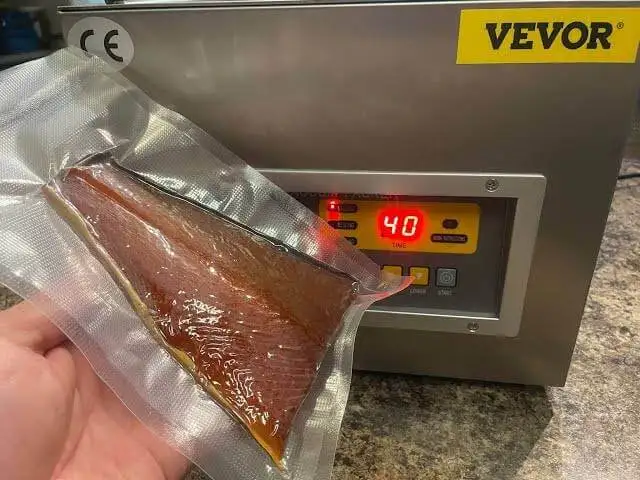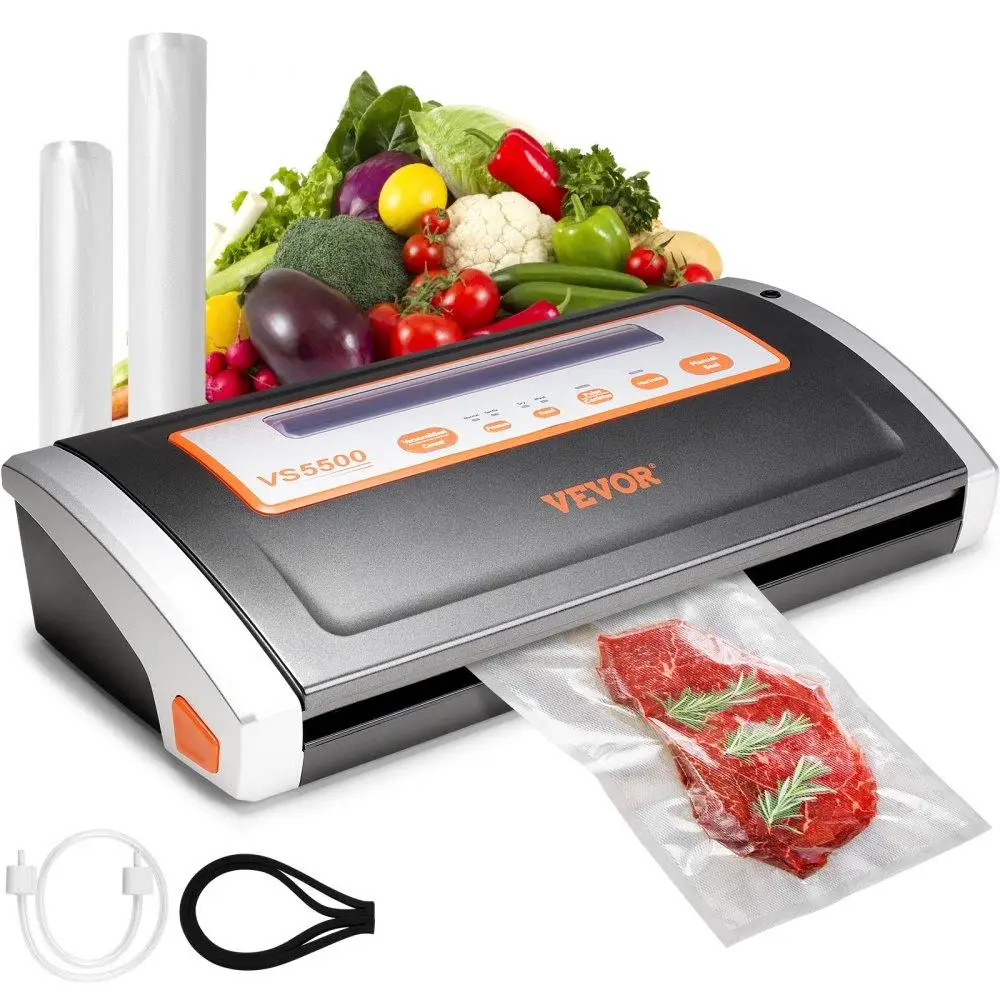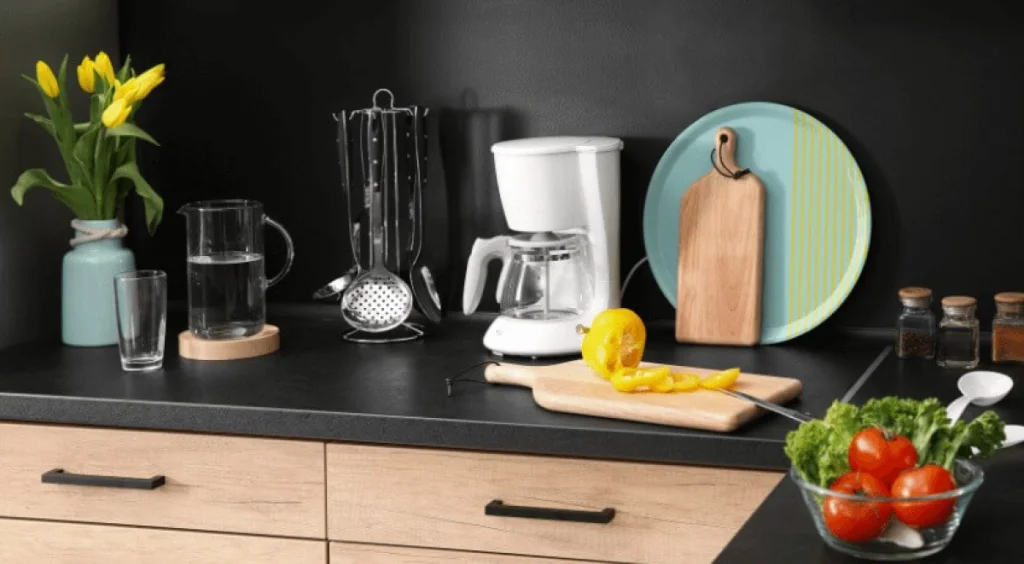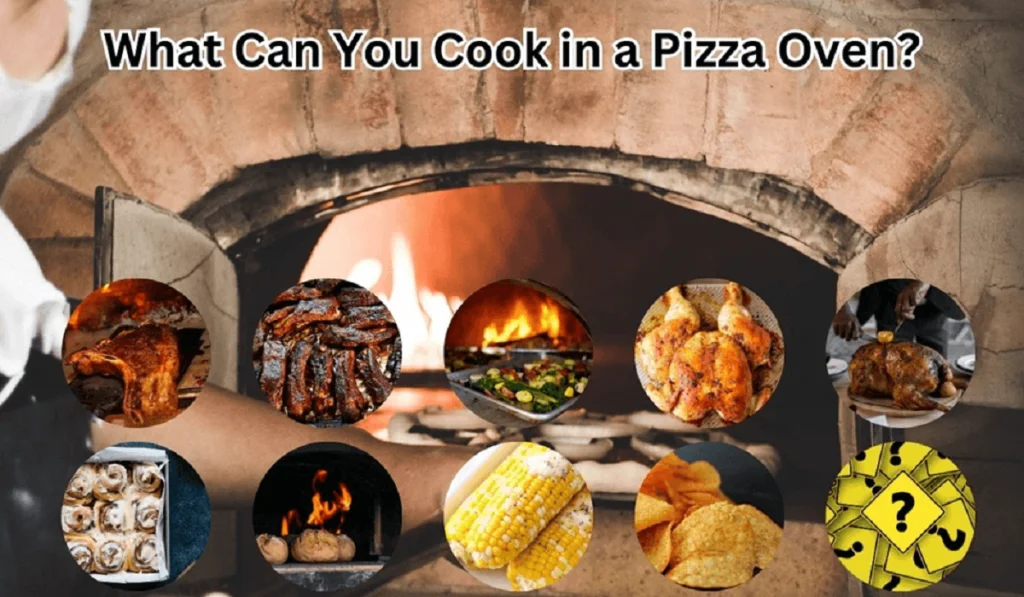Vacuum sealing is a packaging method that eliminates all air from a package just before sealing to keep its contents from oxygen exposure. The preservative method is also called reduced oxygen packaging (ROP). If you own a vacuum sealer, you probably already know some of the best foods to vacuum seal and freeze are fresh meats and veggies. But your vacuum sealer does much more – it’s equally great for storing dry foods and even non-food items.
If you are like many people and have heard of this storage method but have always wondered what you can do with a vacuum sealer, then you are in the right place. Everything you need to know about safely storing food and what you can use a vacuum sealer for is in this article. Keep reading to find out more.
Table of contents
What Foods Can You Vacuum Seal for Long-Term Storage?
Your vacuum sealer can safely store virtually all types of foods, from veggies to fruits, chicken, beef, whole meals, dried/powdered, liquids and pressure-sensitive foods.

Here’s a rundown through various foods, answering questions like, “what can you seal with a food vacuum?”, and “what to vacuum seal aside foods with a sealer?” While the list isn’t exhaustive, it gives a broad range of foods to vacuum seal for long-term storage.
1. Cereals, Pasta, and Rice
You don’t need to store your pasta or rice in bogus bags that chop off large swaths of pantry legroom. Instead, you want to transfer them into sizable vacuum-sealed bags to ease up things in the kitchen.
Meanwhile, cereal boxes can also take up lots of pantry space. You want to store your sugary foods away from whole-wheat delights by keeping cereals in vacuum sealer bags. Meanwhile, vacuum sealing adds at least an additional 12 months to the shelf life of your dry cereals, pasta, and rice, making quality nutrition less expensive in the long term.
2. Homemade Snacks
Got some homemade snacks like popcorn kernels or other forms of munchies you want to save till later? Sealing them in bags certainly beats microwaving them anyway anytime. Unsealed popcorn snacks, for instance, could stay wholesome for 14 days at best; but vacuum sealing them could preserve them for two more weeks. Though, you want to do so in sizable vacuum sealed portions with seldom air exposures to last longest and avoid infiltration by insects or critters.
3. Dried Fruit
You don’t need to store your dehydrated fruits like apples or cranberries in a fridge if there’s a vacuum sealer. Since their moisture is already sucked, keeping them in an airtight container can go a long way in safeguarding the fruits’ integrity. While the lifespan of dried fruits sealed in the pantry varies from one item to the other, vacuum sealing generally increases their shelf life by 50-100%.
4. Spices
Exposing spices like ginger and pepper to excess moisture could ruin or spoil them quickly. Your best bet at elongating their shelf life is storing them in a dry place in airtight bags. While your regular spices’ storage could last 2 years at most, vacuum sealing them could add an additional 12 months to their shelf life. Remember to label your spices when placing them in bags to differentiate similar-looking spices from one another to avoid a catastrophic lunch.
5. Trail Mix
Made some trail mix recipe that you’re aching to preserve? Break it up into single servings and package with your sealer. That makes it easier to scoop portions at the next meal time or when you’re preparing for a long weekend. It also keeps it fresher for longer throughout your trip, compared to other preservation methods like freezing.
Other food items you can vacuum seal include:
- Leftovers
- Raw meat
- Smoothies and other blends like baby foods, mashed potatoes, etc.
- Coffee beans
- Chocolate
- Pre-made breakfasts like pancakes, omelets, and breakfast sandwiches.
- Veggies
- Yams/potatoes
- Flour and sugar
Other Things to Vacuum Seal (Non-Food Items)
What can I vacuum seal apart from food items is one of the most recurring queries. Since vacuum sealers keep contents secure from the air, they can help to store and protect other non-food valuables. So if your query about “what can you use a vacuum sealer for” goes beyond your food items, check out this list of non-edibles to safely store in a vacuum sealer.
- Electronics like phones, tablets, nuts, and bolts
- Jewelry
- Keepsakes like photo albums
- Guns and ammunition
- Important documents like birth certificates, etc.
- Camping gear
- Hunting gear
- Baby items
- Automobile emergency kits
- Medicine, and more.
Benefits of Vacuum Sealing Your Foods
While we’ve answered a popular question like, “what can you do with a vacuum sealer?” You also want to know exactly HOW these functional kitchen aids would help. This section provides insights on the essential benefits of vacuum sealing your foods.

1. Saves Time and Money: Your sealer makes it easy to purchase meats in bulk, seal and cut into meal-sized portions when necessary for as long as six months. Beside saving you on cost against almost constant inflation, hitting the fridge for a meal-sized chicken is sure quicker than the supermarket’s every other weekend.
2. Protects and Preserves Foods: Vacuum sealing protects and preserves foods (and even non-food items) from decay caused by bacteria or molds. Since they keep moisture and air away from your foods, you can avoid freezer burn or dehydration which could reduce your foods’ shelf-life. Reports show that vacuum sealing can preserve foods up to 5 times longer than storing in plastic containers or bags.
3. Ensures Foods Taste Better: Perhaps one of the most intriguing advantages of vacuum sealing is that vacuum-sealed foods taste better. That’s because vacuums effectively hold in the foods’ moisture, juice, and flavors throughout the storage period.
Things to Note for Successful Food Sealing
Food vacuum sealing is one of the best solutions for quicker, cheaper, healthier, and more convenient meals. Have you ever wondered how best you can prepare your foods for sealing to maximize their uses? Here are some vital tips to note.
- The fresher the meat (or fresh foods) at the time of purchase, the longer they can stay in the vacuum sealer.
- Mark bags with seal dates so it’s easier using the older batches first.
- It’s best to freeze meats before sealing them to preserve all their juices throughout the storage process.
- Cover foods’ sharp edges using wax paper for an additional protection later so they don’t puncture thin sealer bags. When using the vacuum sealer, don’t overfill your bags; leaving at least 2-3 inches between the seal area and the stored foods is ideal.
- Distribute bulk foods into smaller pieces before sealing them in batches.
Keep Your Food Fresher and Longer with VEVOR Vacuum Sealer
Many users who began using a sealer soon realized how valuable it was that living without one almost became unthinkable afterward. Thanks to vacuum sealer manufacturers like VEVOR, you can always purchase top-quality vacuum sealers you can bet will improve your kitchen’s aesthetics and enhance your storage capacity. Plus, VEVOR vacuum sealers are highly functional without looking bulky. You want to check out their sealers, make a purchase, and never have to worry about food spoilage or material degradation from oxygen exposure.

Thankfully, VEVOR’s premium sealers come in various shapes, makes, and sizes, each with a unique combination of features to give you quality food preservation, unbeatable aesthetics, plus competitive value for your money.
Food Vacuum Sealing: FAQs
Q: What Foods Can You Not Vacuum Seal?
Thankfully, there is only a small list of food items you can’t vacuum seal. They include garlic, raw onions, soft vegan cheese, and mushrooms. For context, garlic and mushrooms have a high chance of containing bacteria and spores, which could harm your health after long storage.
Q: What Can You Vacuum Seal and Freeze?
Have you been looking for answers to the question, what foods can you vacuum seal and freeze? Vacuum-sealing is your ideal way to reseal snacks, trail mix, cereal, rice/pasta, dehydrated fruits, raw meat, or practically any item that will benefit from air-tight storage. You can also vacuum seal leftovers instead of throwing them out and save money while preserving the food quality, flavor, and freshness. This list also includes non-food items like collectibles, valuable documents, medicine, jewelry, and electronics.
Q: Are There Any Foods I Shouldn’t Vacuum Pack?
Yes. Avoid vacuum packaging foods like mushrooms, garlic, soft cheeses, and raw onions. They have a high likelihood of hosting pathogenic spores and bacteria over long-term storage. No matter what, avoid vacuum sealing these foods; it’s never worth the risks. Instead, consider keeping your onions and garlic in a basket or paper bag in a cool, dark place for proper air circulation, and they can last up to 3-6 months.
You can’t vacuum seal cruciferous vegetables like turnips, watercress, kale, mustard greens, and bok choy. They emit gas as they ripen, filling the bag with air that eventually spoils food.
Q: Does Vacuum Sealing Foods Save Money?
Yes. Properly sealing your foods before storage can save money by extending how long they stay in safe storage. Keeping foods for longer helps you beat constant inflation at the markets, reduce the overhead costs of frequent purchases, and avoid food wastage.
Q: What Can You Vacuum Seal in Jars?
Dehydrated food and dry goods are the best food items to store in sealed jars. People often use this method to preserve dry goods like coffee, tea, nuts, herbs, spices, dried fruits, dehydrated vegetables, pickles, and similar food items for later.
Conclusion
Vacuuming has been recommended as an effective way to store and preserve foods over the years. Several studies have also shown that the food storage method is largely safe, effective, and economical. This guide has provided insights on the foods you can vacuum, and also provided insights on the best foods to vacuum seal, among other things. If you already have a vacuum sealer, we hope this guide has assisted you in coming up with fresh and exciting vacuum sealer ideas on how to vacuum seal your fruits and veggies to save their shelf life while spending less money and time on healthy nutrition.
Also, you may have already found a way to safely store valuable non-food items that need little or no air to stay safe – giving you more reasons to get quality vacuum sealers from brands like VEVOR.





